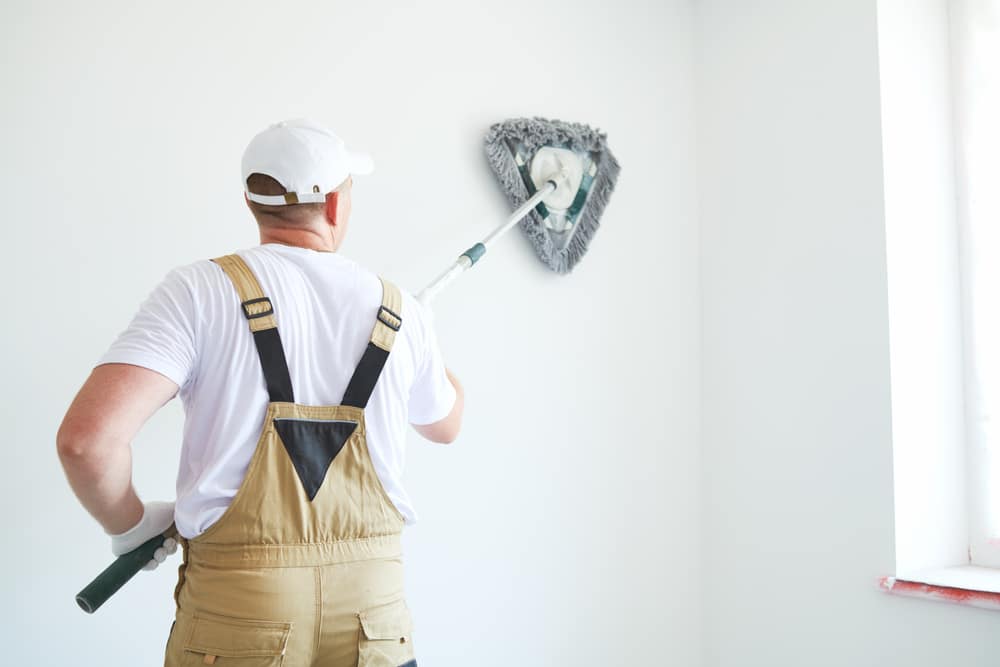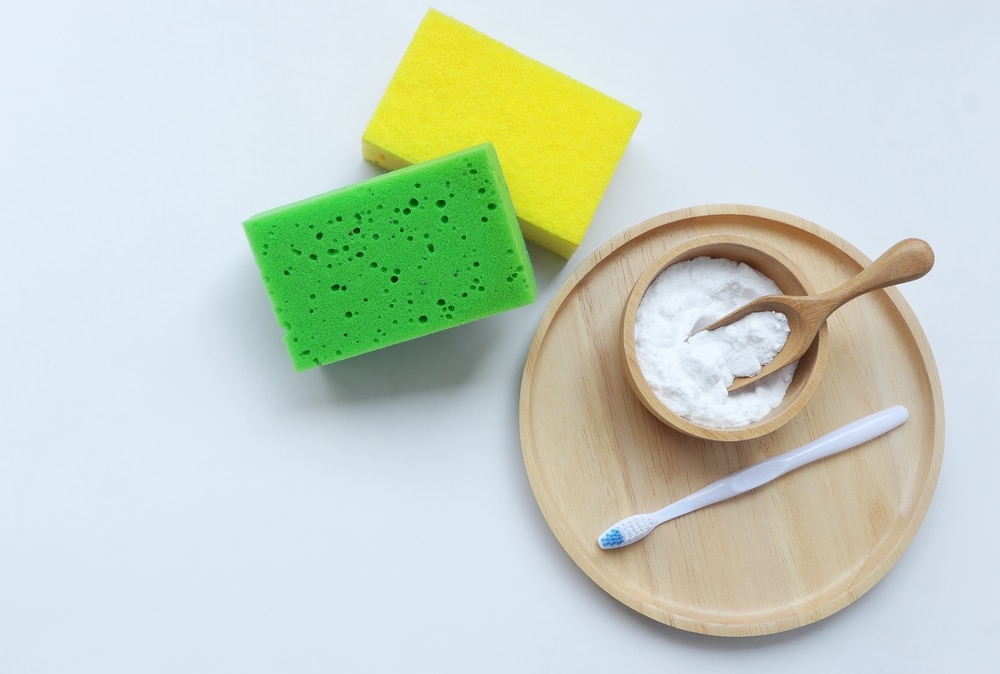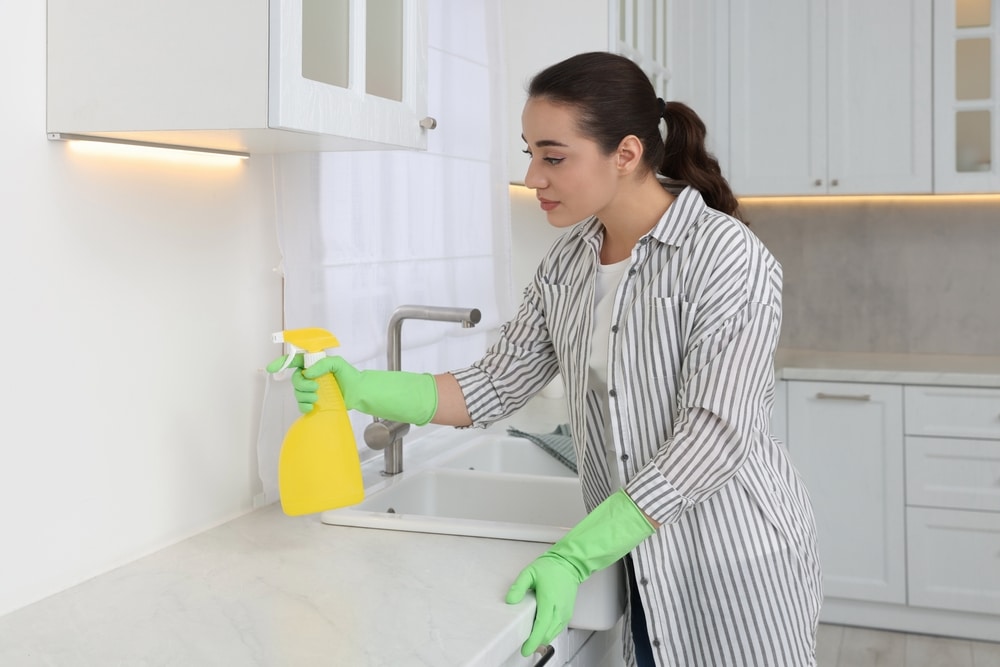Keeping your painted walls looking fresh and spotless can be a challenge, especially with everyday dirt, fingerprints, and stains from high-traffic areas like kitchen walls. Whether you’re dealing with stubborn grease marks, random scuffs, or just routine cleaning, knowing the right methods and products is key to preserving your paint’s finish and color. In this guide, we’ll walk you through the best techniques, cleaning solutions, and tips for tackling everything from light dusting to deep cleaning, all while protecting your walls from damage. Let’s dive in and discover how to clean painted walls to make them shine like new.
Assess the Type of Paint and Finish on Your Walls
Before beginning the cleaning process, it’s important to know the type of paint used on your walls. This will determine how gently or vigorously you should clean.
Latex paint
This is water-based and commonly used in modern homes. It’s easy to clean and relatively durable. However, excessive scrubbing can still wear it down.
Oil-based paints
Oil-based paints are more common in older homes or high-moisture areas like kitchens and bathrooms. They are more durable but require a slightly different cleaning approach.
Flat or Matte Finish
These are more prone to staining and can be damaged easily by excessive scrubbing.
Eggshell, Satin, or Semi-gloss Finish
These paints are more durable and can handle more scrubbing.
Gloss or High-gloss Finish
Extremely durable and easiest to clean, often used in kitchens and bathrooms.
Knowing your types of paint and paint finishes will guide your choice of cleaning solutions and methods.
General Dusting and Light Cleaning

Before applying any cleaning solutions, it’s essential to start by dusting your painted walls. This step will remove any surface dust and debris, preventing them from mixing with the cleaning solutions and creating a muddy mess.
Materials Needed
- Microfiber cloths
- Soft-bristle brush
- Vacuum with a soft brush attachment
Method
- Use a microfiber cloth or a soft-bristle brush to gently dust the walls from top to bottom. If using a vacuum, ensure it has a soft brush attachment to avoid scratching the paint.
- For walls with a dry or chalky surface, gently wipe using a dry sponge or dusting mitt.
- Cobwebs tend to gather in the corners, so make sure to dust those areas carefully.
Spot Cleaning For Stains And Marks

Spot cleaning is ideal for removing small smudges, handprints, or food stains.
Materials Needed
- Sponge or microfiber cloth
- Mild dish soap
- Warm water
- Baking soda (optional for stubborn stains)
Warm water and Dish Soap
For most latex paint or oil-based paints, the simplest solution of clean water and a few drops of dish soap works wonders. Dish soap is gentle yet effective at cutting through grease and grime. This is a great all-purpose cleaner for everyday dirt and smudges on most painted surfaces.
- Dip a sponge or microfiber cloth into the solution, wring it out so it’s damp, not soaking wet.
- Dab the stain gently and wipe it in a circular motion to lift it off. Avoid rubbing too hard, especially on flat or matte finishes.
- Use a clean, damp cloth to rinse the area, then pat dry with a towel.
Make a Baking Soda Paste
If you’re dealing with scuffs marks or minor stains, a paste made from baking soda and water can help. Baking soda is a gentle abrasive, making it perfect for spot clean jobs.
- To create the paste, mix a few tablespoons of baking soda and water until it reaches a thick, paste-like consistency.
- Apply this directly to the scuff’s marks using a soft cloth. Gently rub with a cloth.
How to Clean Painted Kitchen Walls

If your walls have accumulated grime, especially in high-traffic areas like hallways or kitchens, a deeper cleaning may be necessary. Kitchen walls can be particularly challenging due to the grease, food splatters, and moisture from cooking.
Materials Needed
All-purpose cleaner or degreaser (for kitchens)
- Dish soap
- Bucket
- Warm water
- Microfiber cloths or sponges
- Step ladder (if needed)
Method
- Mix warm water with a few drops of dish soap or an all-purpose cleaner.
- Dip a sponge or microfiber cloth in the solution, wring it out well, and start wiping the walls from the top down. Working from top to bottom ensures that dirty water doesn’t drip down onto already cleaned areas.
- Clean the walls in small sections, rinsing your sponge or cloth frequently to avoid spreading dirt.
- After cleaning each section, go over it with a clean damp cloth to remove any soap residue. Use a towel to dry the area to prevent water streaks.
For greasy buildup, particularly in the kitchen:
- For areas like behind the stove, a degreaser may be necessary to cut through the grime. Be sure to test it on a small, inconspicuous area first to ensure it doesn’t damage the paint.
How to Clean Painted Bathroom Walls
Bathrooms are prone to mildew and water stains. If your painted bathroom walls have these issues, you can tackle them with a mixture of water and vinegar.
Materials Needed
- White vinegar
- Warm water
- Spray bottle
- Soft sponge or cloth
Method
- In a spray bottle, mix equal parts white vinegar and warm water.
- Lightly spray the solution onto the affected areas.
- Use a soft cloth or sponge to wipe the walls. The vinegar helps kill mildew and remove water spots without harming the paint.
- Wipe the area with a damp cloth to remove any vinegar residue.
Best Products for Cleaning Painted Walls

When cleaning painted walls, it’s essential to use the right products to avoid damaging the paint. Here are some recommended cleaners.
1. Murphy Oil Soap
A gentle cleaner that is safe for most painted surfaces, it is ideal for removing grime and grease while being gentle on the paint.
2. Mrs. Meyer’s Multi-Surface Cleaner
A plant-based cleaner that works well on walls without leaving residue. It is safe for painted surfaces and comes in various scents.
3. Magic Eraser
Effective for removing stubborn stains, marks, and scuffs.
Use with caution on delicate finishes like flat or matte paints.
4. Vinegar and Water
A natural cleaner that works well on mildew and water stains, especially in bathrooms.
5. Simple Green All-Purpose Cleaner
A biodegradable cleaner that is gentle on paint but tough on dirt and grime.
When cleaning painted walls, avoid harsh chemicals such as bleach or ammonia, as they can strip the paint or cause discoloration. Stick to mild detergents and water-based cleaners.
Pro Tips for Maintaining Clean Walls
Regular Dusting
Dust your walls regularly to prevent the buildup of grime and dust.
Address Spills Quickly
Wipe off any spills or stains as soon as they occur to prevent them from setting into the paint.
Ventilate Rooms
Ensure proper ventilation, especially in kitchens and bathrooms, to reduce humidity and prevent mildew growth on painted surfaces.
Test in Small Areas
Always test any cleaning method on a small, inconspicuous area of the wall first to ensure it won’t damage the paint.
Conclusion
Cleaning painted walls is a simple yet essential task to keep your home looking fresh and well-maintained. By discovering how to clean painted walls using the right methods and products, you can keep your walls clean without damaging the paint. Regular dusting, spot cleaning, and occasional deep cleaning will help maintain the beauty of your painted surfaces for years to come.

![[Guide] How to Clean Painted Walls Housekeeper's Hand With Glove Cleaning Mold From Wall With Sponge](https://paintings247.com/wp-content/uploads/2024/09/Housekeepers-Hand-With-Glove-Cleaning-Mold-From-Wall-With-Sponge-And-Spray-Bottle-768x512.jpg)